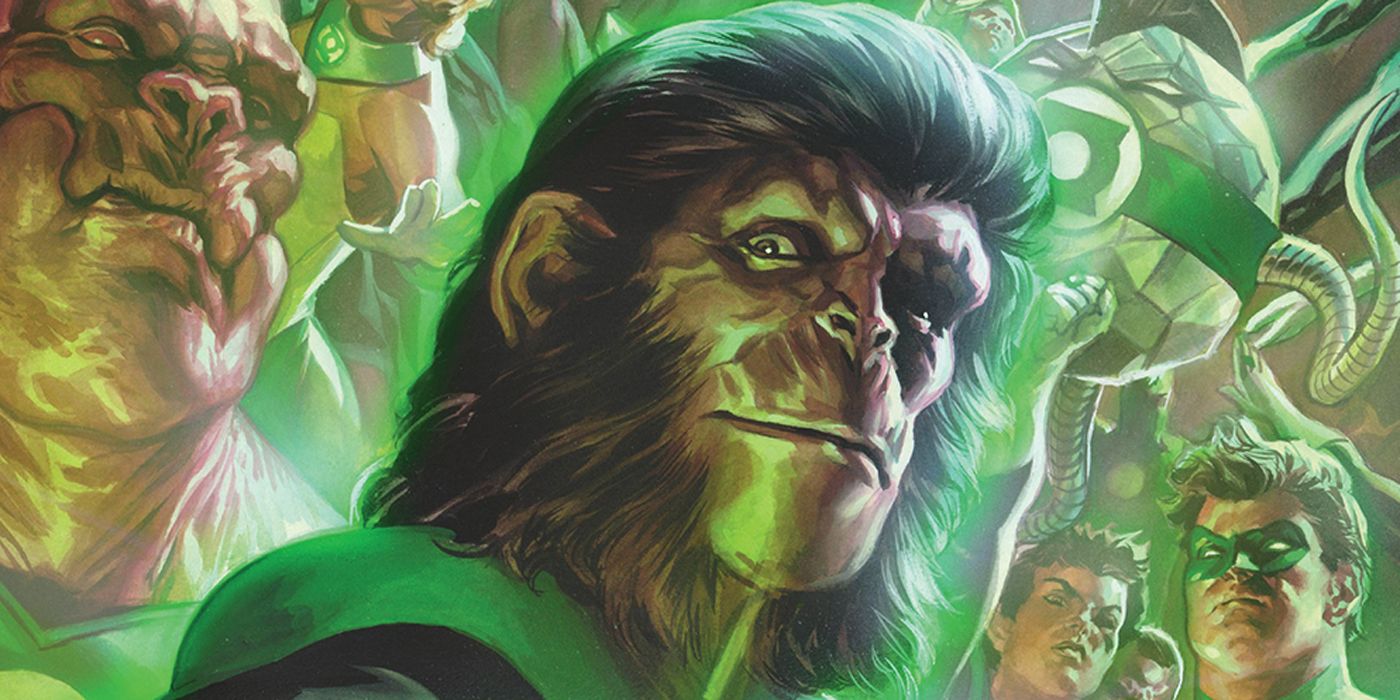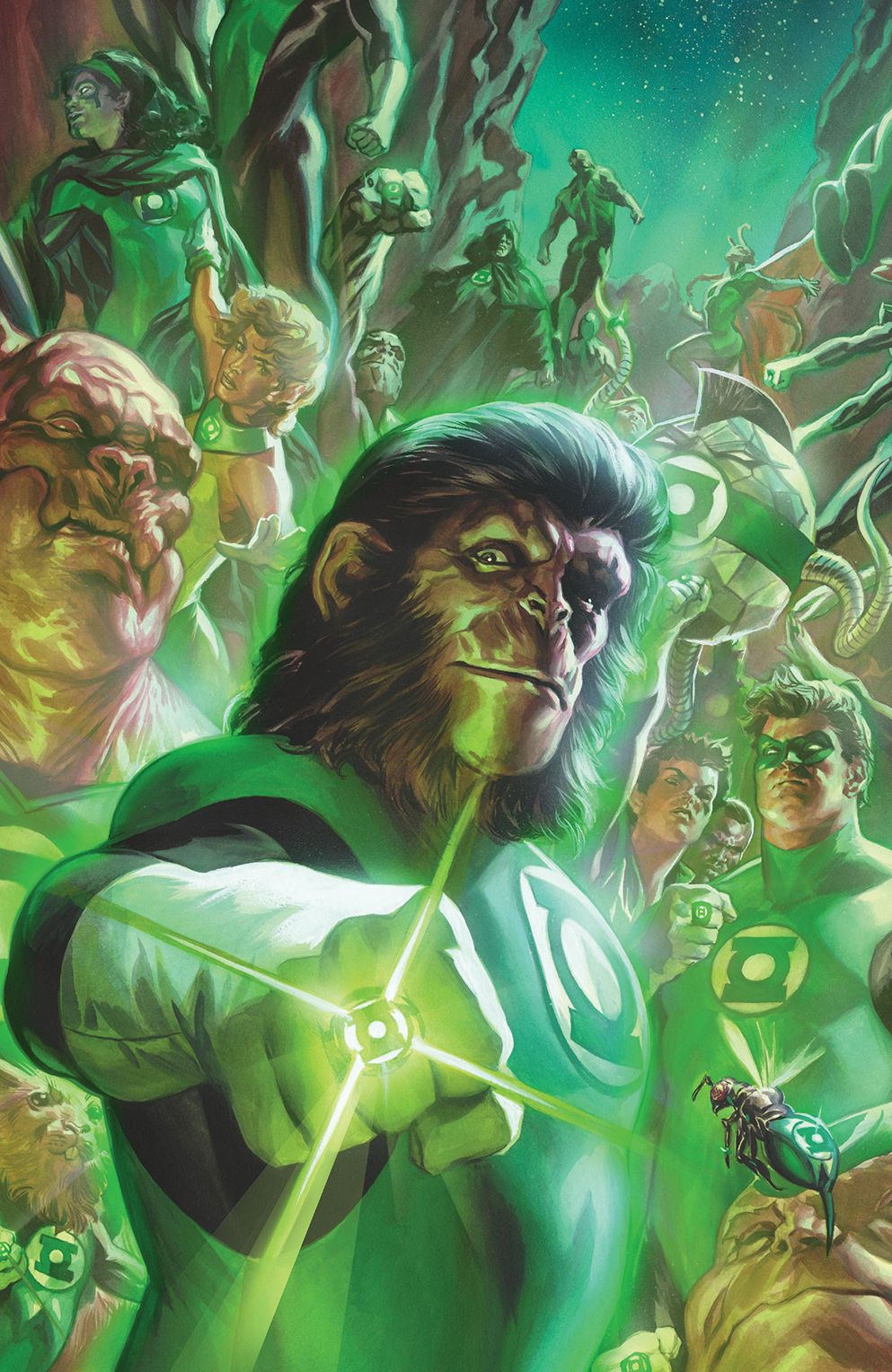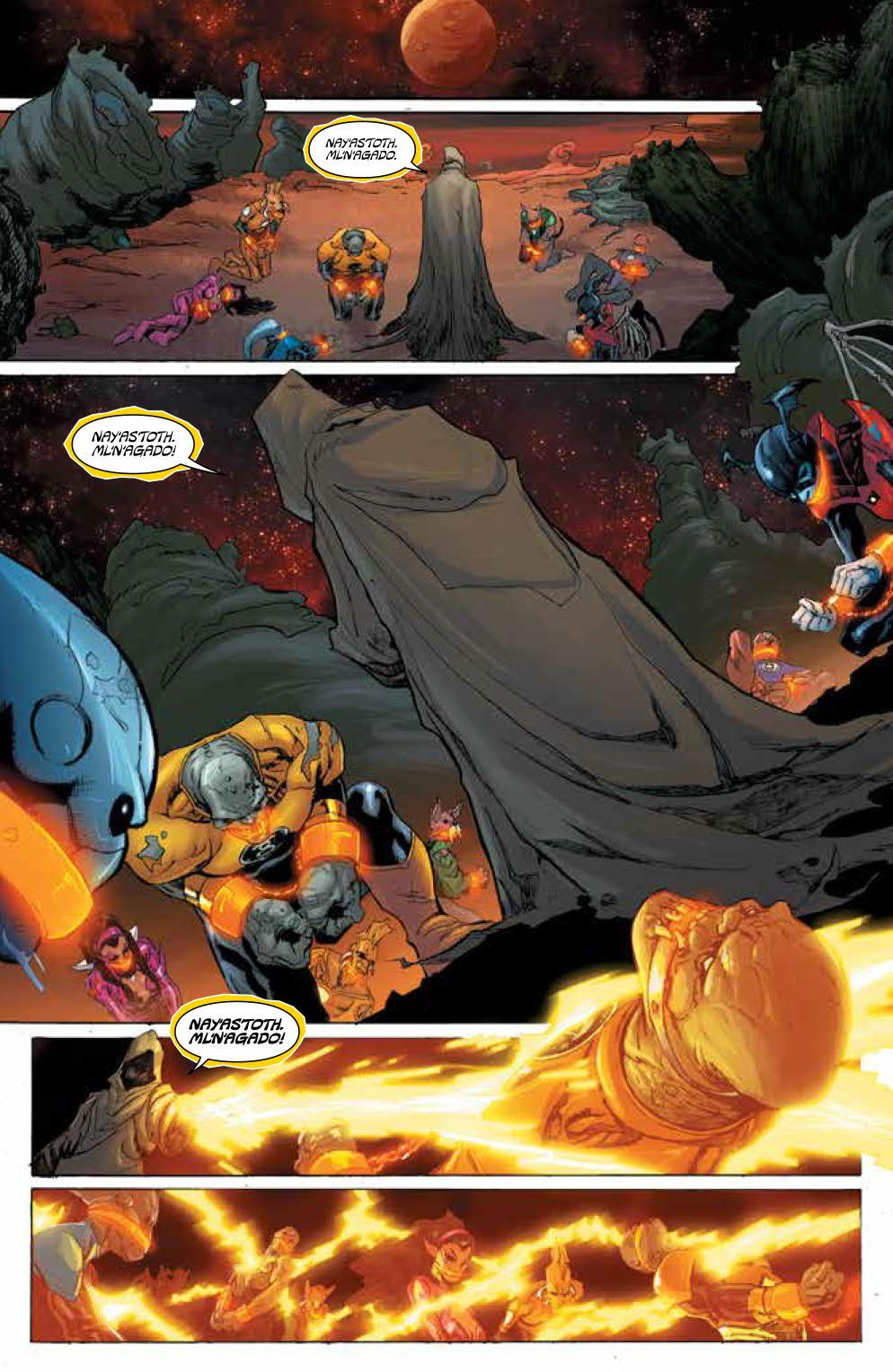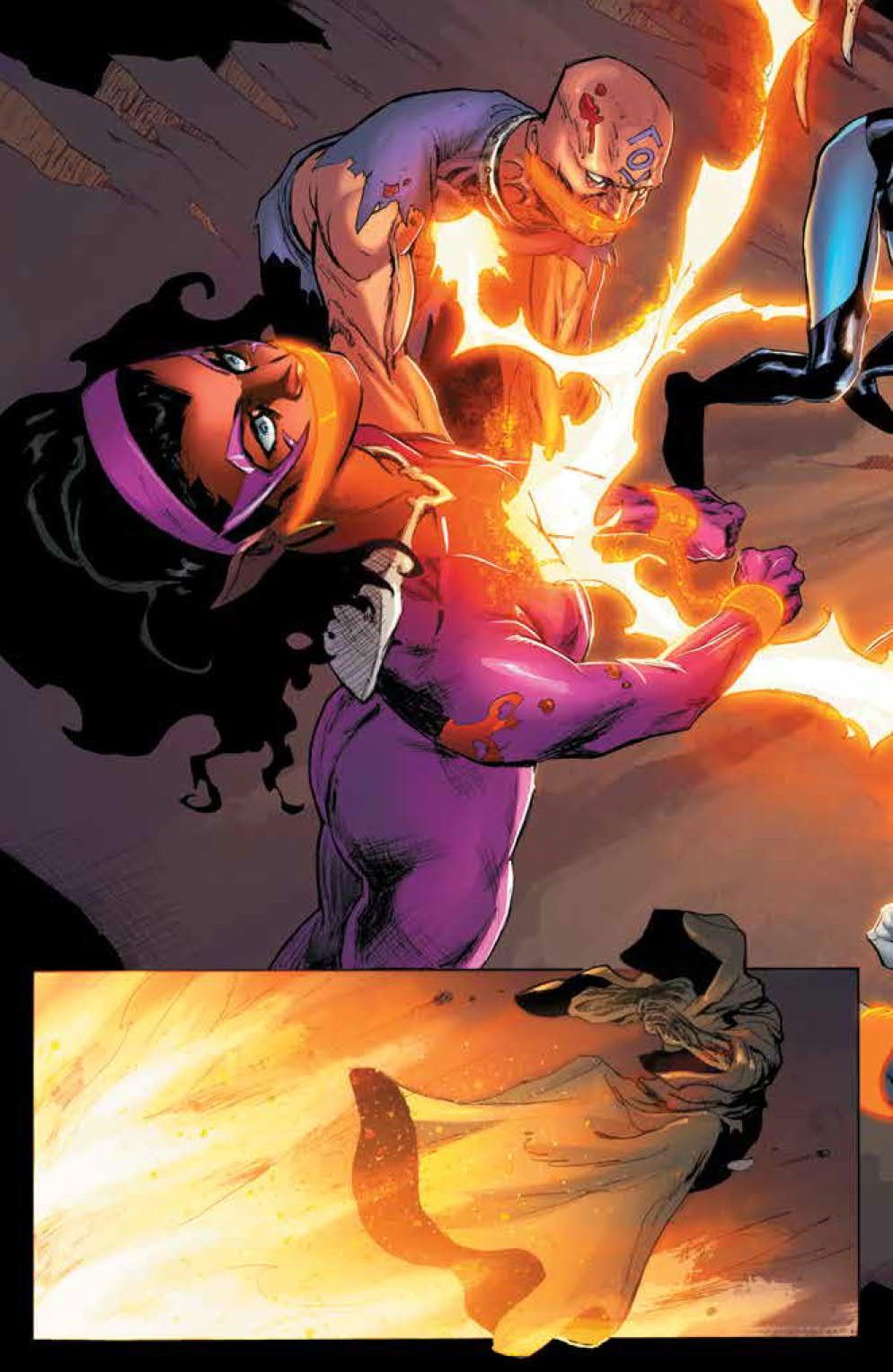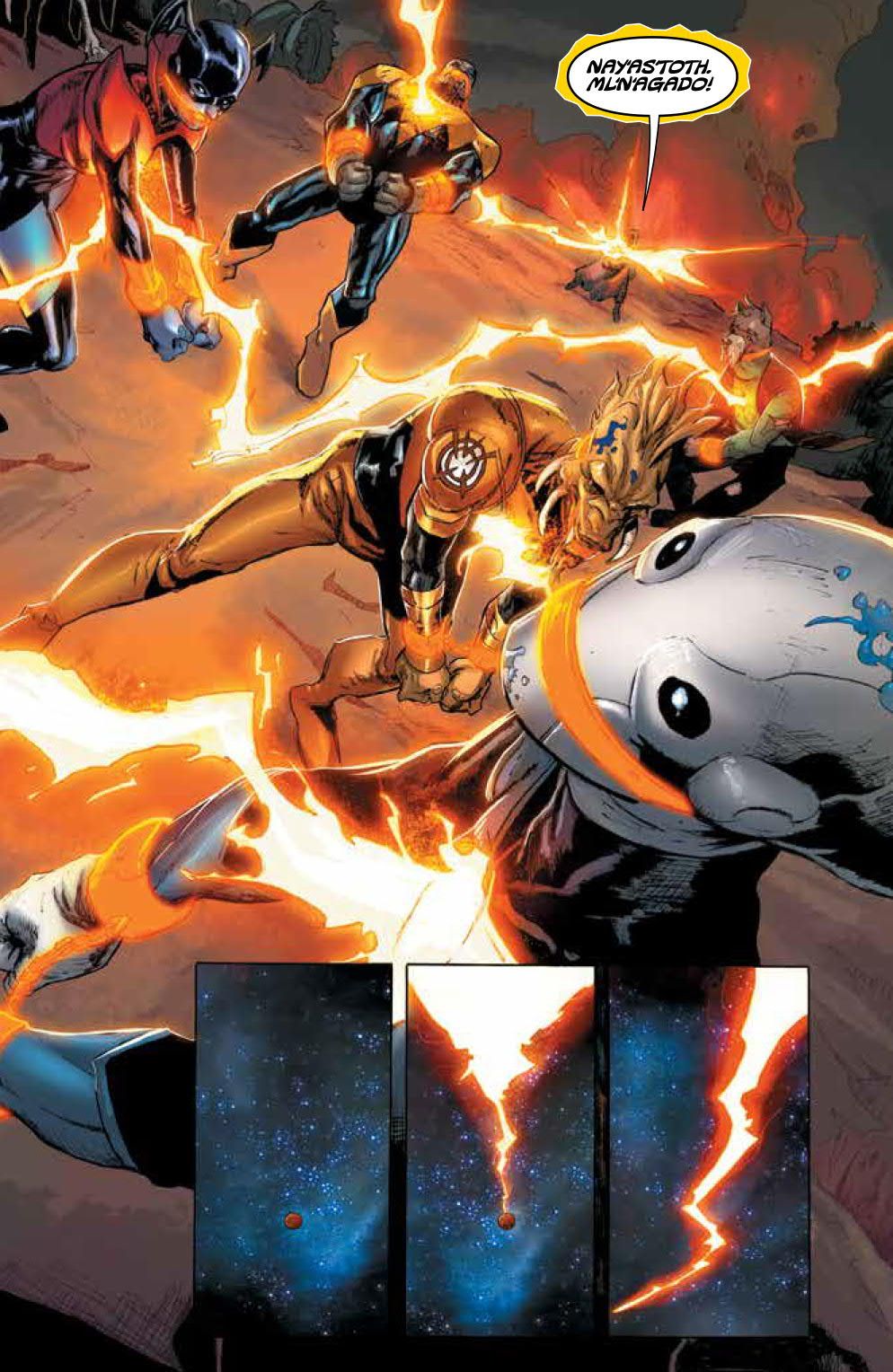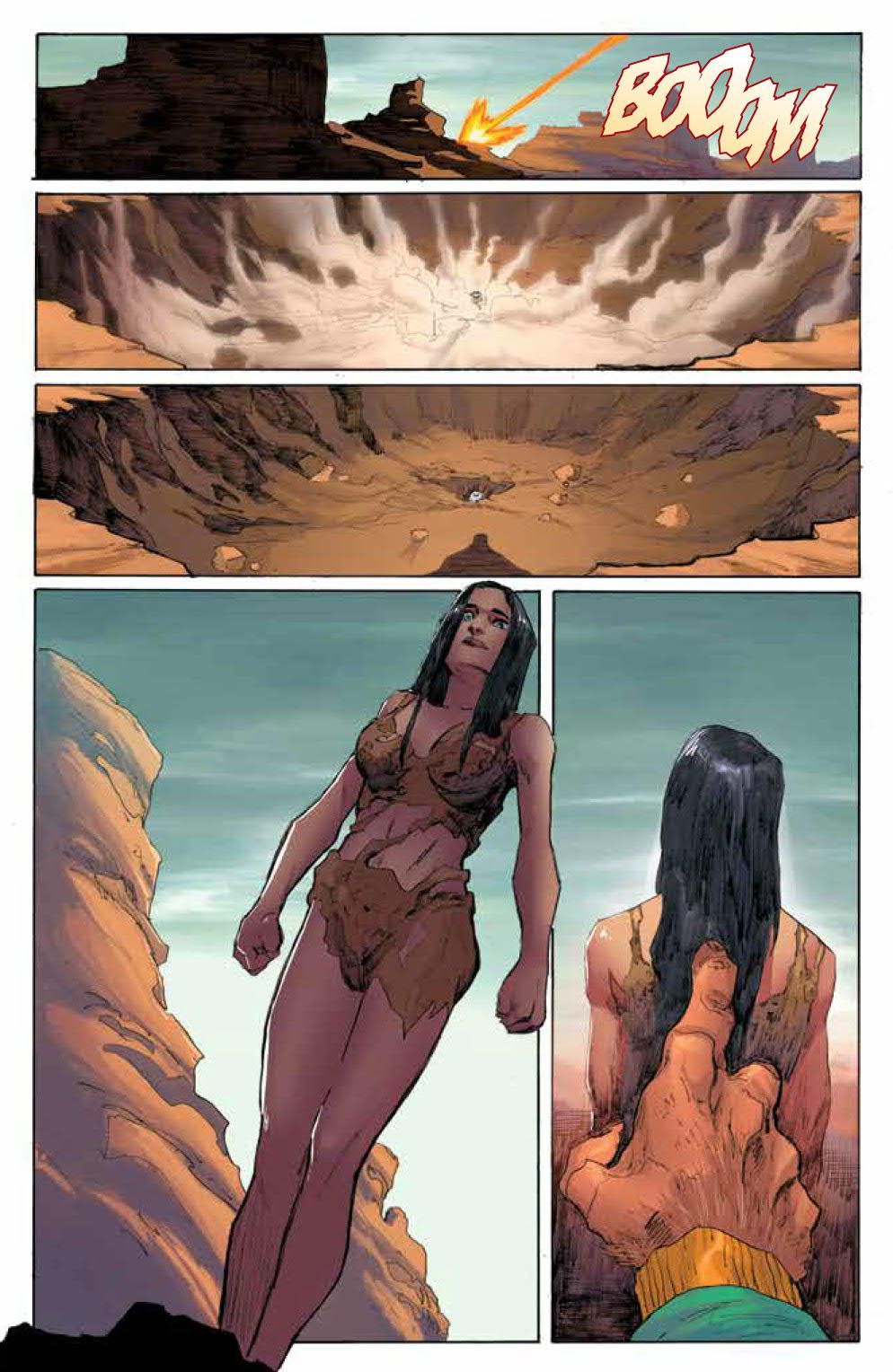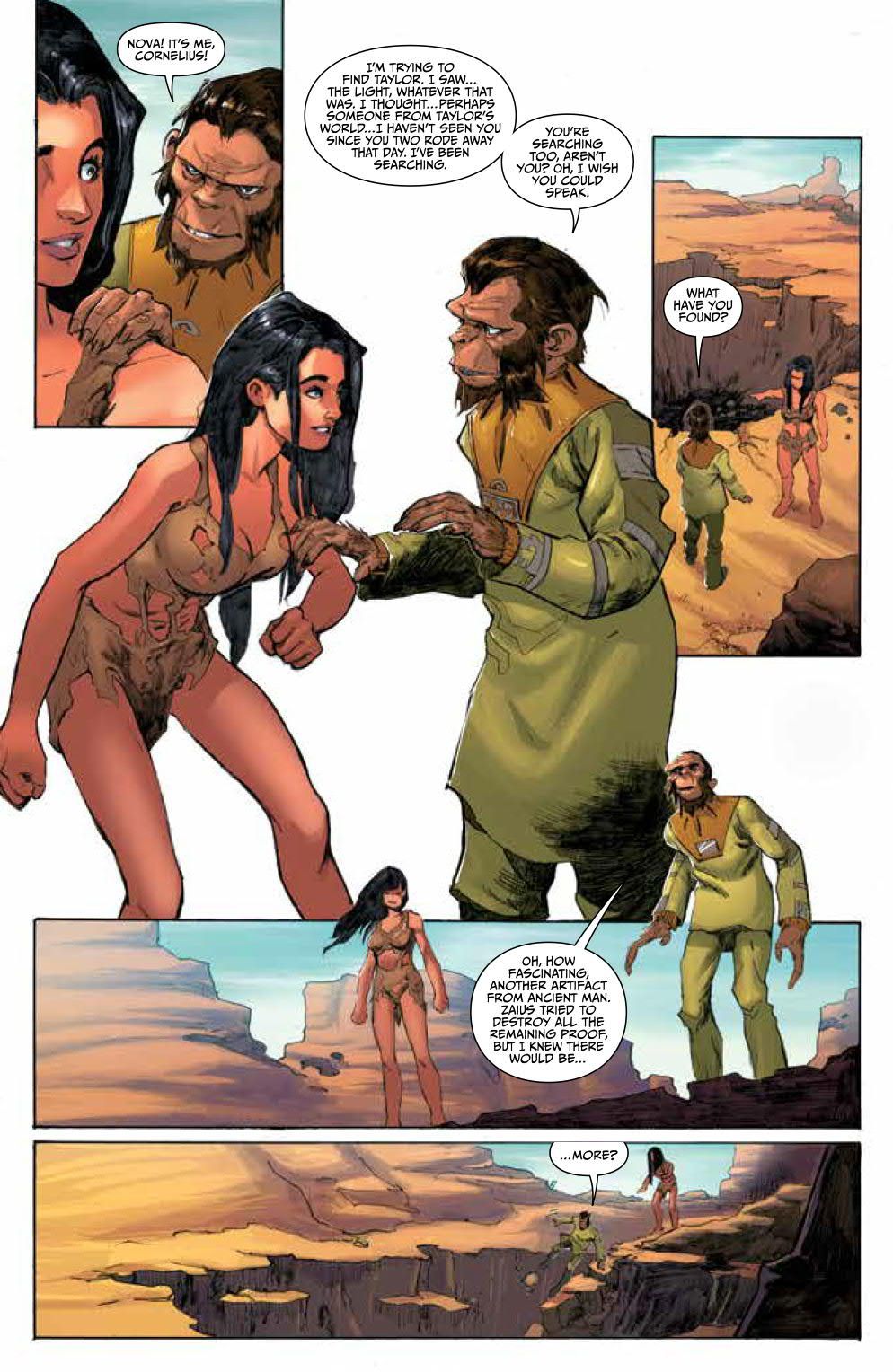SPOILER WARNING: The following article contains spoilers for "Planet of the Apes/Green Lantern" #1, on sale now.
Two of the most storied sci-fi franchises in history crashed into each other in comics stores this week with the release of "Planet of the Apes/Green Lantern" #1, a time-spanning adventure from BOOM! Studios and DC Comics.
The companies looked to "Silk" scribe Robbie Thompson to plot the book, former "Green Lantern: New Guardians" writer Justin Jordan to script it and "The Omega Men" artist Barnaby Bagenda to draw it. The results find Sinestro creating an amazing new ring that traveled forward through time to the version of Earth seen in the original "Planet of the Apes." Taking place roughly between the 1968 classic and its 1970 sequel "Beneath the Planet of the Apes," Hal Jordan winds up on the future Earth and must figure out what to do about this new, dangerous ring.
RELATED: BOOM! Teams with DC for Planet of the Apes/Green Lantern Series
To get the low-down on the first issue of this high-flying story, CBR talked to Jordan and Thompson about setting the stage, creating the weapon and Captain Taylor's whereabouts.
CBR: The most successful crossovers are able to bring the best parts of two different franchises together and make something that feels organic to both. What were the key aspects of Green Lantern and "Planet of the Apes" that you knew would facilitate that?
Justin Jordan: A lot of what’s going on in "Apes" is about power and control, if you look at the film series as a whole. At first in trying to control Taylor and, by limiting the flow of information, the apes themselves. And this expands as the series [continues].
The Green Lantern franchise is about, at least in part, power and justice. These are people who are given the most powerful weapon in the universe with the instruction to do good. Sinestro, for instance, is what happens when you twist the justice part.
So, I think there’s a pretty natural -- although not necessarily obvious -- connection there. In both cases, you’re looking at the use of power and resisting the temptations that come along with it. That’s why will is important to the Green Lanterns. That gave us a pretty good hook for how to treat the story and how to make sure it felt relevant to both of the properties.
Was it difficult figuring out exactly when this story would take place so that it wouldn't get too complicated on either side?
Jordan: Robbie and [Editor] Dafna [Pleban] did most of the heavy lifting there. The story is out of continuity, so we had some wiggle room, but we were very conscientious to make sure it fits in a place where everything that had happened up to the point of divergence happened in the story.
We do know exactly when this takes place in the Apes timeline, and that led to a lot of re-watching the movies to be clear on who knew or did what when. You don’t need to know that stuff to read the story, but if you’re familiar with the Green Lantern or Apes mythos, it adds to the story.
Robbie Thompson: Dafna was instrumental in finding the best moment to dip into the Apes timeline. We were looking for the right spot to drop in to tell our own story, but still honor the original franchise, as well as the closed time loop aspect of those movies. We really wanted to make sure we had the best "cast" available to us, which also helped us figure out the best place to start. As a fan of the original movies, I'm really excited where and when this story takes place.
It seems like one of the major themes of the series is finding the will to keep fighting even when exhaustion has taken over. What made that one of the key elements for the story for you as writers?
Jordan: Will is the cornerstone of the Green Lantern stories. It’s why Green Lantern Corps members got the job to begin with. And on the Apes side, Cornelius and Zira are just not willing to give up in the movies. It’s not as overt an act of will, but it’s still them pushing past obstacles through, mostly, not giving up.
And exhaustion has another, more insidious quality. It’s not just that you might want to give up. It’s that it makes you want to take shortcuts. To compromise on things, you might not ordinarily be willing to do. To make you lie to yourself. That quality ties in directly to the overarching idea about the uses and temptations of power.
In the first issue we see Cornelius finding this ring that seems to have the ability to shift colors. What can you tell us about the weapon and the threat it poses?
Jordan: The Universal Ring was, basically, an attempt to create a White Lantern ring. If you’re not familiar with the Green Lantern mythos -- and you don’t really need to be to enjoy this -- the White Lantern can tap all the powers of the spectrum. This ring though, has some serious side effects, so serious that the Guardians decided to seal it away in the closed loop of the Planet of the Apes timeline. It’s incredibly dangerous, and there’s no good way to use it, as our characters are going to learn.
Thompson: The Universal Ring is incredibly powerful but equally volatile and it was a great vehicle to really push the characters from both properties to their limits. Dafna worked closely with the folks at DC to make sure we had the right fit for the type of ring we were looking for and Justin's done an amazing job of really making this Ring feel like an integral part of Lantern lore and mythology.
We see Nova in the first issue, but Taylor is nowhere to be found. Will he wind up playing a role as the story continues?
Jordan: The "Where’s Taylor?" question is answered, very definitively, in issue two. You can probably guess, if you’re familiar with the movies, by the end of issue one.
RELATED: EXCLUSIVE: Five New Planet of the Apes/Green Lantern Covers
In addition to Barnaby Bagenda's excellent interior art, this book also has covers by the likes of George Pérez, Ethan Van Sciver and Felipe Massafera. What's it like seeing these artists contributing to a story you wrote?
Jordan: It doesn’t suck! More seriously, I’ve been a big fan of Barnaby’s for a while. His run on "Omega Men" was tremendous, and it was super cool to be able to work with him. If I weren’t already sold on the idea of working on Planet of the Apes, his involvement as an artist alone would have been enough.
Thompson: It's been mind-blowing. Dafna and [co-editor] Alex [Galer] have assembled an unbelievable art crew for this book. Barnaby Bagenda is amazing and has such a great handle on both franchises. And Ethan Van Sciver is a Lantern legend! His cover was one of the first images I saw of the book and I was blown away. Felipe Massafera's covers are so iconic and perfect. And that George Pérez connecting cover is absolutely epic. I can't wait to have every cover in my hands!
"Planet of the Apes/Green Lantern" #1 by Robbie Thompson, Justin Jordan, Barnaby Bagenda and published by BOOM! Studios and DC Comics is in stores now. Issue #2 is scheduled for release on March 8.

